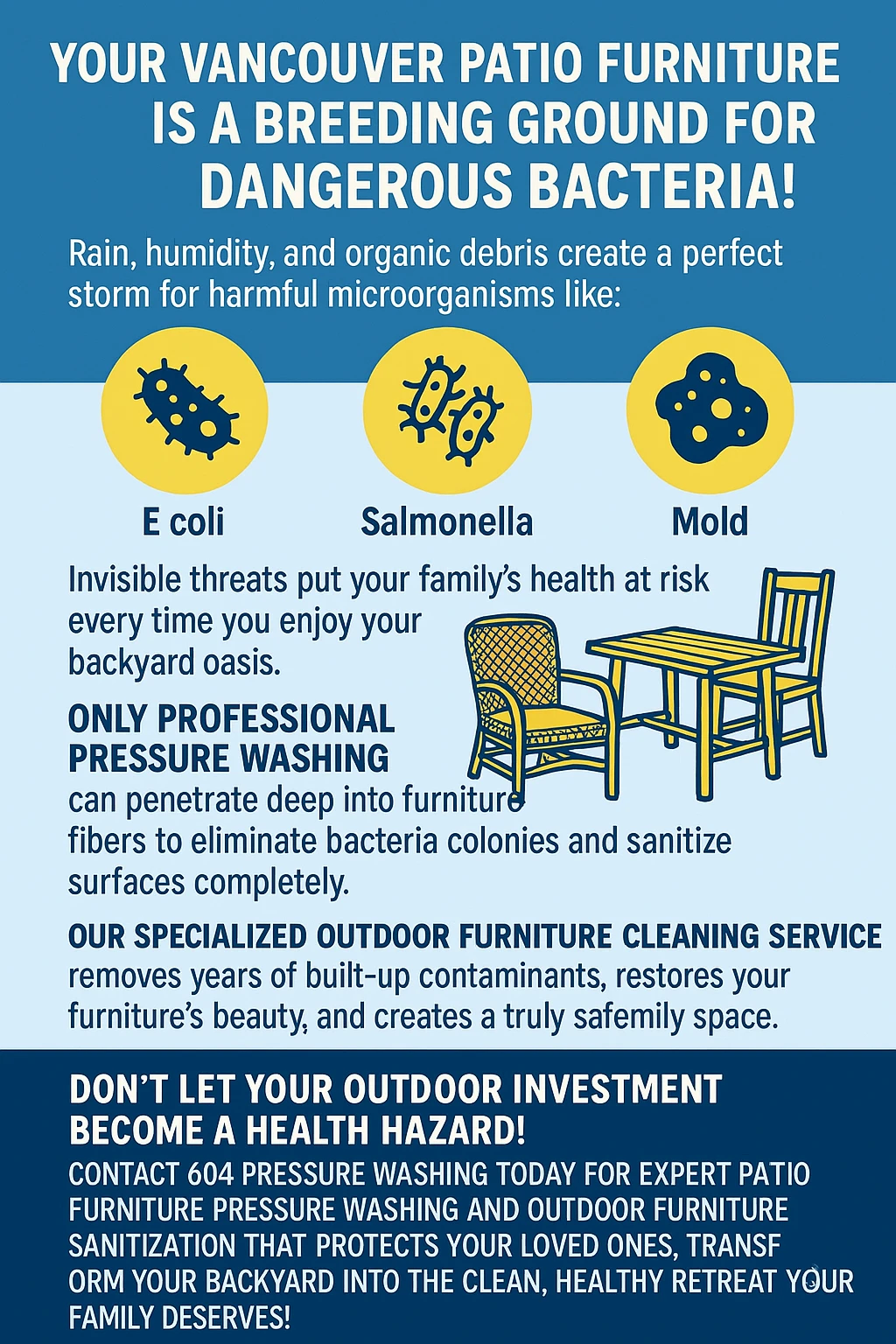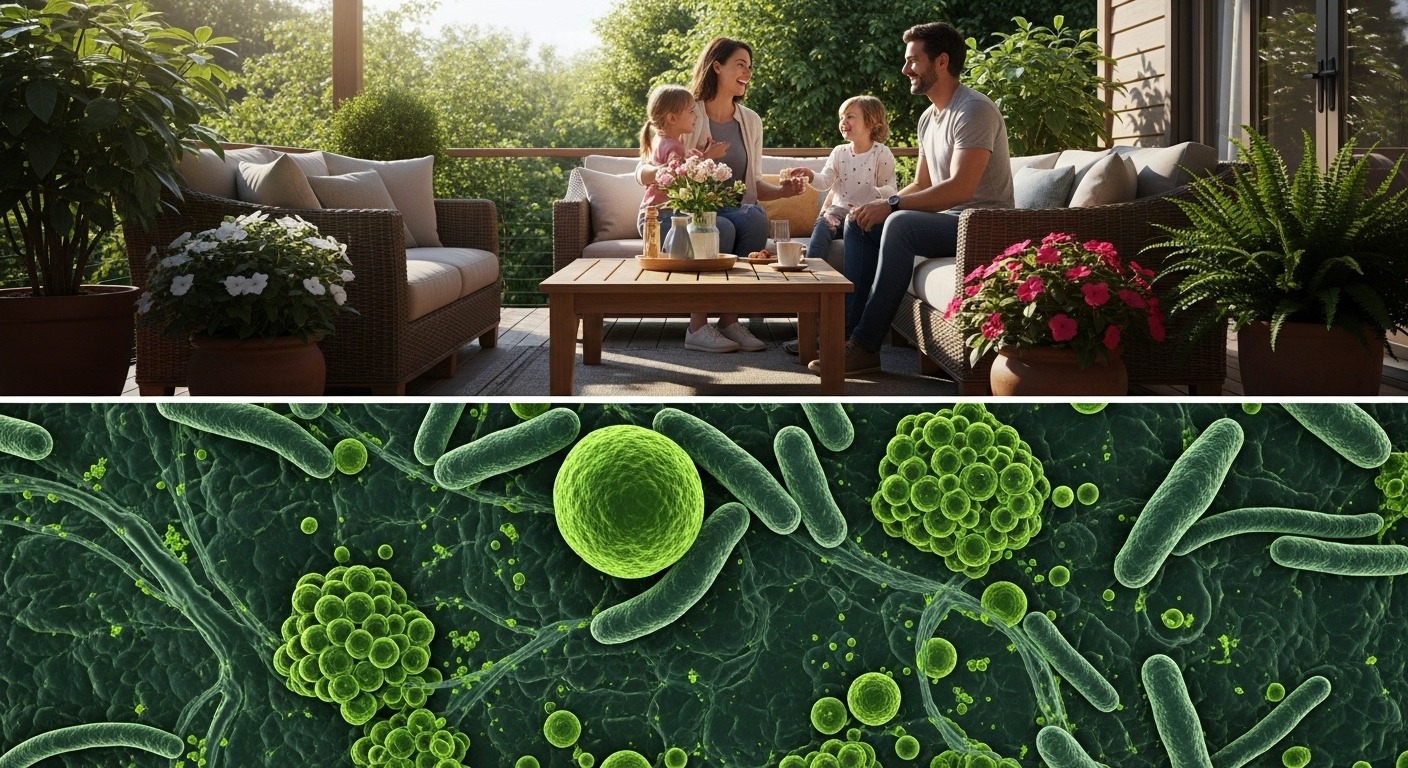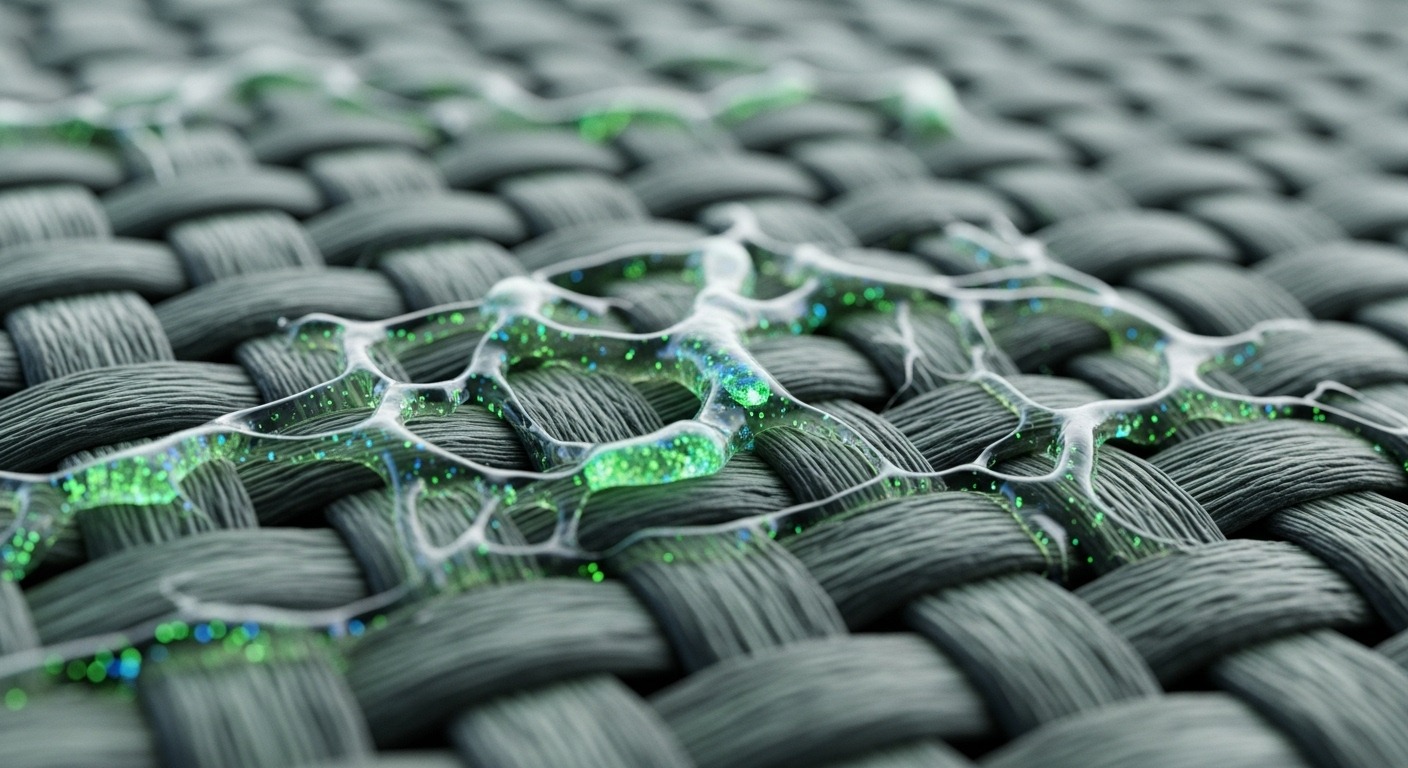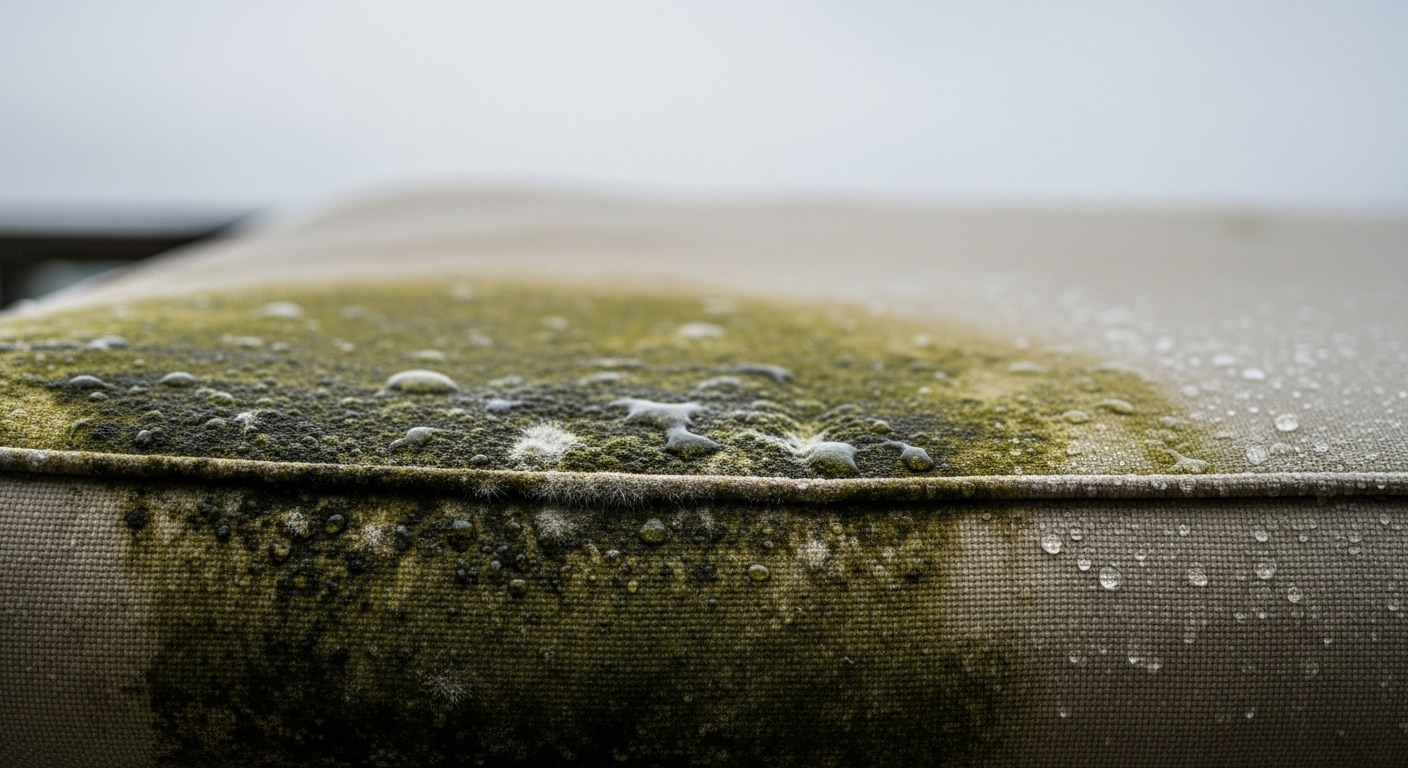Why Your Vancouver Home’s Outdoor Furniture is Harboring Dangerous Bacteria (And How Pressure Washing Creates a Safe Family Space)
Wondering why your family keeps getting sick after spending time on the patio? Your outdoor furniture could be harboring dangerous bacteria like MRSA and E. coli that survive for months in Vancouver’s humid climate, creating serious health risks for your loved ones.
Picture this: it’s a beautiful Vancouver summer evening, and your family is gathered around your patio table for dinner. What you don’t see are the invisible threats lurking in every cushion, fabric fold, and surface crack. After months of exposure to rain, humidity, and organic matter, your outdoor furniture has become a breeding ground for harmful bacteria and mold spores. These microscopic invaders don’t just disappear when the weather gets nice – they multiply, forming resilient communities that can survive for months without proper intervention.
[IMAGE PLACEHOLDER FOR IMAGE1]
The reality is that most Vancouver homeowners have no idea their outdoor living spaces pose genuine health risks. From pet accidents and food spills to bird droppings and organic debris, outdoor furniture collects contamination that manual cleaning simply cannot eliminate. The good news? Professional pressure washing services offer a powerful solution that not only eliminates dangerous pathogens but transforms your outdoor space into the safe family haven it should be.
Our coastal climate creates the perfect storm for bacterial growth on outdoor surfaces. Unlike drier regions where UV exposure and low humidity naturally inhibit microbial growth, Vancouver’s frequent rainfall and moderate temperatures allow bacteria to thrive year-round on your patio furniture.
Key Outtakes:
- Outdoor furniture can harbor dangerous bacteria like MRSA for over 200 days, while common Streptococcus bacteria survive for weeks without proper cleaning
- Vancouver’s humid climate creates ideal breeding conditions for harmful mold, mildew, and bacterial biofilms that manual cleaning cannot eliminate
- Professional pressure washing removes 99% of harmful pathogens while extending furniture lifespan and improving your outdoor space’s safety
- Regular outdoor furniture cleaning costs $150-250 but prevents expensive health complications and premature furniture replacement
- Different materials require specific pressure washing techniques – wood needs 500-1200 PSI while metal can handle up to 2000 PSI safely

The Hidden Health Threats Living in Your Vancouver Patio Furniture
Your outdoor furniture is harboring more than just dirt and grime – it’s become home to dangerous bacteria that pose serious health risks to your family. Research shows that MRSA can survive up to 203 days on fabric surfaces like outdoor cushions and blankets, while Streptococcus bacteria can persist for weeks on various materials. These aren’t just minor inconveniences – these pathogens can cause severe infections, respiratory problems, and potentially life-threatening complications for family members with compromised immune systems.
Vancouver’s unique climate creates the perfect breeding ground for these invisible threats. Our city’s high humidity levels, frequent rainfall, and mild temperatures provide optimal conditions for bacterial growth and survival. Unlike regions with extreme temperature fluctuations or low humidity that naturally inhibit microbial growth, Vancouver’s moderate coastal climate allows harmful bacteria to establish permanent colonies on your outdoor furniture. The moisture retention in fabrics and wood materials creates microenvironments where dangerous pathogens can multiply unchecked.
What makes this situation even more concerning is the formation of bacterial biofilms on outdoor furniture surfaces. These sophisticated microbial communities are significantly more resistant to cleaning and environmental stresses than individual bacteria cells. When bacteria form biofilms, they create protective matrices that shield them from desiccation, UV radiation, and standard cleaning products. This means that even if you regularly wipe down your patio furniture, you’re likely only removing surface-level contamination while deeper bacterial colonies continue to thrive and pose ongoing health risks.

The contamination sources on outdoor furniture are more diverse than most homeowners realize. Pet accidents, bird droppings, food and beverage spills, pollen, organic debris, and even microscopic particles from skin cells create nutrient-rich environments where bacteria flourish. Each time family members sit on contaminated surfaces, they risk exposure to harmful pathogens through skin contact, inhalation, or accidental ingestion. Children are particularly vulnerable due to their developing immune systems and tendency to put hands in their mouths after touching contaminated surfaces.
Professional testing has revealed alarming bacterial loads on seemingly clean outdoor furniture. Studies of daycare environments found that four out of five stuffed toys tested positive for Streptococcus pneumoniae, demonstrating how effectively bacteria colonize fabric surfaces. When you consider that outdoor furniture faces far more challenging conditions than indoor toys, the bacterial contamination levels on your patio furniture are likely even higher than these controlled environment results suggest.
Specific Pathogens Found on Outdoor Furniture and Their Health Impacts
Understanding the specific bacterial threats lurking in your outdoor furniture helps illustrate why professional cleaning is essential for family safety. The contamination goes far beyond typical dirt and grime that homeowners expect to find on patio surfaces. Outdoor furniture commonly harbors dangerous bacteria including E. coli, Salmonella, and other pathogens from pet waste, spilled food, and organic debris that accumulate over time. These bacteria can cause severe gastrointestinal illness, urinary tract infections, and dangerous complications for vulnerable family members.
Mold and fungal contamination present equally serious health risks on outdoor furniture exposed to Vancouver’s humid conditions. Exposure to mold spores can trigger respiratory problems, allergic reactions, skin irritation, and severe complications for individuals with asthma or compromised immune systems. The CDC warns that mold exposure can cause stuffy nose, wheezing, red or itchy eyes, skin rash, and severe reactions in sensitive individuals. For families with young children or elderly members, these health risks become even more significant and potentially life-threatening.

One fascinating indicator of bacterial contamination is the appearance of pink staining on outdoor furniture surfaces. This distinctive discoloration is caused by Streptoverticillium reticulum bacteria that thrive in humid outdoor conditions. While this particular bacteria is generally harmless to humans, its presence indicates broader bacterial contamination issues and demonstrates how effectively microorganisms colonize outdoor furniture surfaces. The pink staining serves as a visible warning sign that your furniture is harboring various bacterial communities that may pose more serious health risks.
Antibiotic-resistant bacteria pose particularly severe threats on outdoor furniture surfaces. MRSA (Methicillin-Resistant Staphylococcus Aureus) can survive for extended periods on outdoor fabrics and surfaces, creating ongoing infection risks for anyone who comes into contact with contaminated furniture. These superbugs are especially dangerous because they resist common antibiotic treatments, making infections difficult to treat and potentially life-threatening. The outdoor environment provides ideal conditions for these resistant bacteria to persist and multiply.
Research has shown that bacterial survival times vary significantly based on environmental conditions and material types. Streptococcus bacteria demonstrate remarkable resilience when forming biofilm communities compared to individual cells. Scientific studies reveal that biofilm-associated bacteria survive significantly longer than planktonic cultures under identical environmental stresses. This means that bacteria living in communities on your outdoor furniture are much more resistant to natural die-off and standard cleaning methods than isolated bacterial cells would be in laboratory conditions.
How Vancouver’s Climate Accelerates Bacterial Growth on Outdoor Furniture
Vancouver’s coastal climate creates a perfect storm of conditions that accelerate bacterial growth and survival on outdoor furniture throughout the year. While other regions benefit from extreme temperatures or low humidity levels that naturally inhibit microbial growth, our moderate climate allows harmful bacteria to establish permanent colonies that survive across seasons. Understanding these local environmental factors helps explain why Vancouver homeowners face unique challenges in maintaining safe outdoor living spaces compared to residents in other climates.
Moisture retention problems are particularly severe with common outdoor furniture protection methods.


